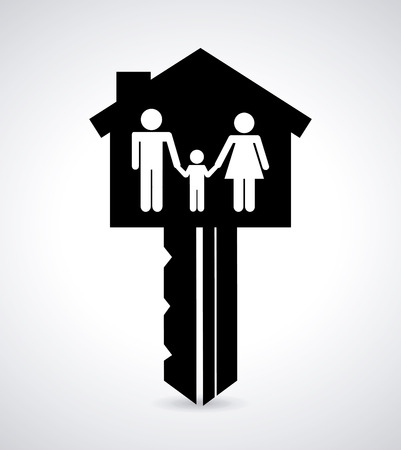Assess the Safety of Your Family and Home
Before you do anything else after a natural disaster, your top priority should be making sure your loved ones are safe and your home is secure. Take a moment to check on all family members and pets, accounting for everyone’s well-being. If someone is injured or in need of medical attention, call 911 immediately. Next, assess your home for immediate dangers like gas leaks, electrical hazards, or structural damage—don’t enter if it appears unsafe. Attend to urgent needs first and avoid taking unnecessary risks just to inspect property damage. Remember, your safety comes before any insurance concerns. Once you’re certain everyone is out of harm’s way and the situation is stable, you can move forward with documenting damages and starting the claims process.
2. Document the Damage Thoroughly
After a natural disaster, it’s essential to document all property damage in detail before starting any cleanup or repairs. Accurate records will help support your homeowners insurance claim and speed up the process. Begin by taking clear photos and videos of every affected area, both inside and outside your home. Make sure to capture wide shots as well as close-ups of specific damages, such as broken windows, roof leaks, water-damaged furniture, or destroyed appliances.
Next, create a detailed inventory of all damaged or lost items. Include descriptions, approximate values, and the condition of each item before the disaster. If possible, gather receipts or proof of purchase for high-value belongings. This level of documentation gives your insurance company a clear understanding of what needs to be repaired or replaced.
Sample Inventory Table
| Item | Description | Estimated Value | Condition Before Disaster |
|---|---|---|---|
| Sofa | Leather sectional, brown | $1,200 | Good |
| Laptop | Dell Inspiron 15″ | $800 | Like New |
| Refrigerator | Whirlpool 20 cu. ft. | $1,000 | Fair |
| Dining Table | Oak wood, seats 6 | $600 | Good |
Having thorough photo evidence and a comprehensive list is crucial when negotiating with your insurance adjuster. It also helps ensure you receive fair compensation for your losses. Remember to store digital copies of your documentation in cloud storage or email them to yourself for safekeeping during the recovery process.

3. Contact Your Insurance Company Promptly
After a natural disaster, time is of the essence when it comes to filing a homeowners insurance claim. As soon as you and your family are safe, reach out to your insurance provider to report the damage and begin the claims process. Most insurance companies have 24/7 hotlines or online portals specifically for disaster-related claims, making it easier to get help quickly. Before you call or log in, have your policy number handy along with any relevant details about the incident—such as the date of the disaster, a brief description of the damage, and any immediate needs you might have (like temporary housing). Prompt communication ensures that your claim is officially on record and helps prevent delays in getting financial assistance for repairs or living expenses. The sooner you start this process, the faster your family can begin recovering and getting back to normal.
4. Understand Your Policy and Deductibles
Before you move forward with your homeowners insurance claim, it’s essential to take a close look at your policy. Every policy is different, so knowing exactly what is covered—and what isn’t—will help set realistic expectations. Start by reviewing the types of natural disasters included in your coverage, such as hurricanes, tornadoes, earthquakes, or floods. Some policies may exclude certain events, or require separate add-ons for specific disasters.
Another crucial element to understand is your deductible. The deductible is the amount you’ll need to pay out of pocket before your insurance coverage kicks in. Depending on your policy and the type of disaster, this could be a flat dollar amount or a percentage of your home’s insured value.
Common Coverage and Deductible Types
| Disaster Type | Typically Covered? | Possible Deductible Structure |
|---|---|---|
| Hurricane | Yes (may require hurricane rider) | Percentage-based (1-5% of home value) |
| Tornado | Usually covered | Flat dollar amount or percentage |
| Flood | No (requires separate flood insurance) | N/A unless covered by separate policy |
| Earthquake | No (requires separate earthquake insurance) | N/A unless covered by separate policy |
Why It Matters for Your Claim
If you file a claim without understanding these details, you might be surprised by out-of-pocket costs or denied claims. Knowing your coverage helps you prepare financially and prevents misunderstandings during an already stressful time.
Action Steps:
- Locate a copy of your homeowners insurance policy.
- Review the “Declarations Page” for coverage limits and deductibles.
- If anything is unclear, call your insurance agent for clarification.
This preparation ensures that when you file your claim, you’ll know what’s covered and how much you’ll need to contribute toward repairs or replacement costs.
5. Work with the Insurance Adjuster
Once you’ve submitted your homeowners insurance claim, your insurance company will assign an adjuster to assess the damage to your property. Cooperating fully with this professional is essential for a smooth claims process. Start by making yourself available for any scheduled inspections—the adjuster will need to visit your home, review the damage firsthand, and ask you questions about what happened during the natural disaster. Be sure to provide all necessary documentation, such as photos of the damage, repair estimates, and receipts for any temporary repairs or emergency expenses. Having everything organized and ready can help move things along faster. Remember, the adjuster is there to help determine the extent of your loss and ensure you receive a fair settlement. If possible, keep a detailed record of all interactions with the adjuster, including dates and what was discussed. Staying proactive and responsive shows that you’re committed to resolving your claim quickly so your family can start getting life back to normal.
6. Keep Records and Receipts
When you’re dealing with the aftermath of a natural disaster, it’s easy to get overwhelmed by repairs, temporary moves, and unexpected purchases. However, one of the most important steps in filing your homeowners insurance claim is to keep organized records of every expense related to the disaster. Save all receipts for home repairs, hotel stays, meals if you had to eat out due to displacement, and any essential items you needed to purchase—like clothing or toiletries—if yours were damaged or lost.
Insurance companies often require proof of your expenses to process reimbursements. Detailed documentation helps avoid disputes and speeds up the claims process. It’s helpful to create a dedicated folder or envelope for all paper receipts and take clear photos of them as a backup. For digital purchases or payments, save emails or download transaction confirmations.
If possible, make a simple spreadsheet listing each expense, the date, what it was for, and the amount paid. This makes it easier for your insurance adjuster to verify your claim and ensures that nothing gets missed. Remember: keeping thorough records not only protects your family financially but also brings peace of mind during a stressful time.
7. Follow Up and Stay Organized
After you’ve filed your homeowners insurance claim, it’s important to stay in touch with your insurance company. Make sure to keep a record of every phone call, email, or letter you exchange. Write down the date, time, name of the representative you spoke with, and any important details from your conversations. Using a dedicated notebook or a digital folder on your computer can help you keep all documents and communications in one place.
Being proactive is key to keeping your claim moving forward. Don’t be afraid to reach out if you haven’t heard back within a reasonable timeframe—sometimes claims get delayed simply because follow-up is lacking. If your adjuster asks for additional documents or photos, try to provide them as soon as possible. Prompt responses not only show that you’re organized but also demonstrate your commitment to resolving your claim quickly.
Finally, save all receipts for repairs or temporary living expenses. Your insurance company may need these as proof of your losses and costs. Staying organized and communicating regularly helps avoid misunderstandings or delays, ensuring that your family can recover and return to normal life as smoothly as possible after a natural disaster.


